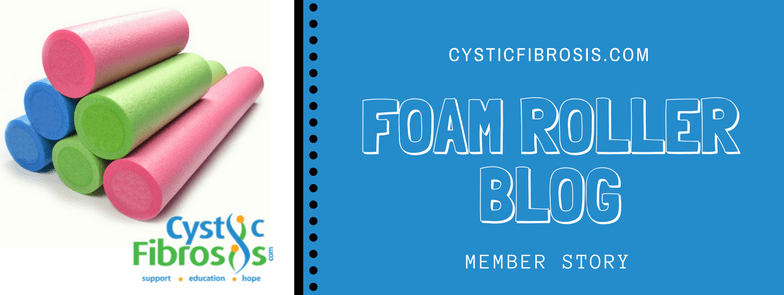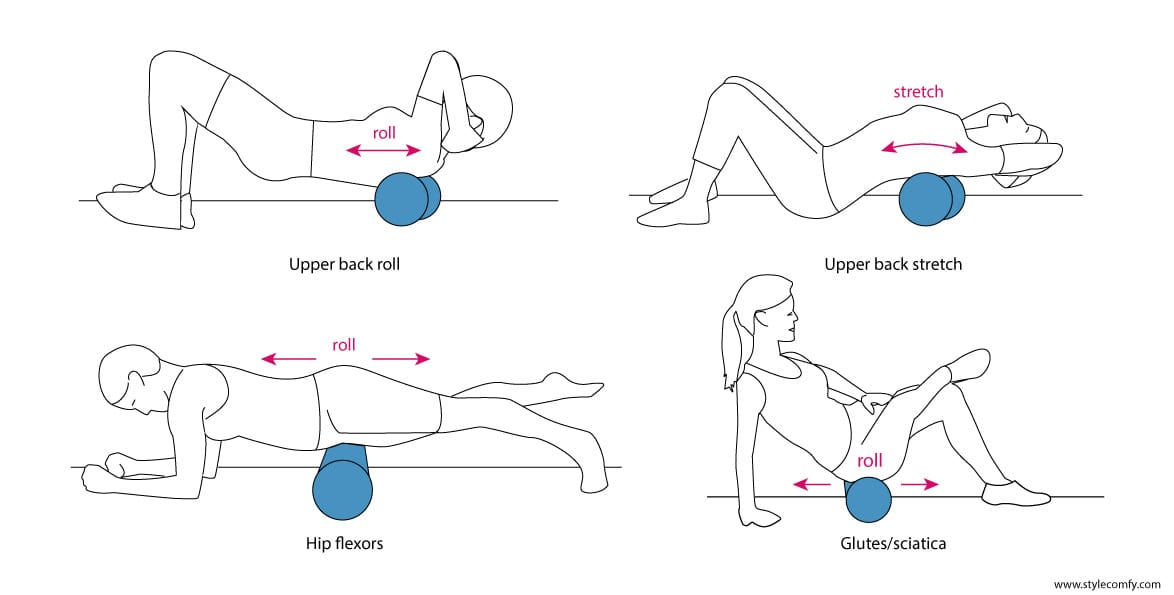Cystic Fibrosis treatment: Foam roller benefits – a member blog
I recently received some questions about foam rolling, as a result of a personal blog Top remedies or tools for CF related ailments, which listed foam rolling as one of my favourite CF remedies. Questions such as “What is a foam roller?” and “How does one use it?” – Here is a bit more information:
Self-myofascial release, also known as “foam rolling,” is a term for self-massage to release muscle tightness or trigger points.
Foam rollers are fairly simple objects: light weight but firm, high-density foam tubes, +- 18 inches long and 6 inches diameter, and they may have a smooth or a bumpy surface. In general, you place the roller on the floor and position your body over it, and then roll over it, using the weight of you body to apply pressure and massages the spot where the roller and your body makes contact.
Foam rollers have become popular exercise and physiotherapy aids, and something that I have felt great benefit from. Some CF factors that can contribute to stiff back muscles or sore muscles include coughing, posture changes due to lung infections and changes to chest structure, strange or upright sleeping positions, poor flexibility, low exercise tolerance, and CF related inflammation or joint problems. Don’t forget other non-CF lifestyle causes such as sitting too long in front of the computer.
A few foam rolling benefits:
- A feeling of “opening up” tight shoulder blades, pectoral muscles or upper back
- Rolling increases blood flow and releases muscle tightness, making them healthier and more elastic
- Instant gratification: Even though the rolling motion may be slightly painful (sometimes, not always), I feel an immediate sense of relief afterwards
- It rubs out knots (trigger points) in muscles without needing a second person to assist; you can get to hard to reach areas
- You can control the pressure and can reduce or increase the intensity, as you are driving the motion with the movement of your body
- I feel it improves my CF posture problem like hunched shoulders and rounded back, by doing an inverted stretch with upper back over the roller as shown in the illustration
- For pre and post-workout muscle massage to prevent and relieve soreness
- Once you get the hang of it, the roller is not complicated to use, and the object is simple and portable
There are so MANY types of exercise you can perform with a foam roller, on almost every muscle of your body, from your calves up to your hamstrings, hips, glutes, shoulders, arms and my favourite: upper back. Any search on YouTube or Pinterest will result in numerous examples and instructions. The illustration below has a few I like to do:
Sample exercises:
Upper back (thoracic spine) roll and stretch: Lie on your back and place the roller under your upper back, just below your shoulder blades. Lift your hips slightly, engage your core, then roll slowly on your upper back area. For the stretch: lower your hips, keep your lower back straight, place your hands behind your head for support, and relax into an arch over the roller.
Hip flexors or outer thigh roll: Lie on your side, and lift your body enough to place the roller under your hip. Stabilise your core for balance, then roll slowly from hip to above the knee. Switch to the other side and repeat.
Glutes: Sit on the foam roller (width-wise), and cross right foot over left knee and use your hands for support behind you. Lean in slightly as you roll, which will amplify the massage on your glutes. This can also help for sciatica.
Some mistakes to avoid:
The following is not recommended: rolling directly on an injured area; rolling too quickly or making harsh motions; staying on one spot too long; and having a collapsed posture while you do the exercises. Instead, be sensible, don’t be extreme in the application, try to remain focused and have a stable posture while rolling.
Take note that some professionals caution against rolling directly on certain parts like neck and lower back, so you should consult your medical professional or fitness instructor if you have any areas of concern. However, as a side note, I have had lower back surgery for something unrelated (long before I even had a roller) and have generally found the foam roller to be a very safe apparatus.
I like it so much that I have been using it 5-10 minutes per day for almost a year now. I take it everywhere, including to hospital as I am prone to develop additional body aches while I’m sick, and this gives me some relief.
Leave a comment if you have any thoughts on foam rolling, or other related exercises. Happy rolling!





